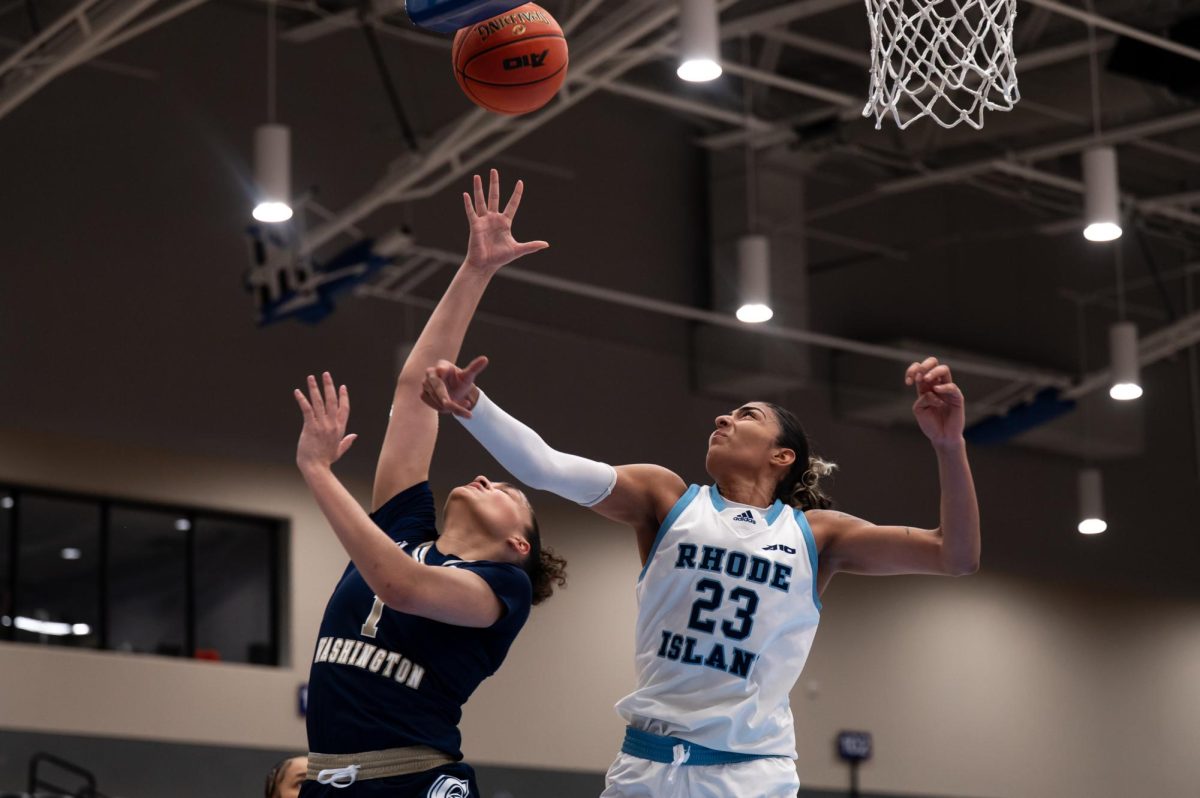Junior Kacey Coyne, once a nationally-ranked gymnast, underwent surgery in July following a fall off a vault that fractured her already-damaged spine. Surgery had been in the back of Coyne’s mind long before the accident, which occurred at a meet during her sophomore season.
Coyne suffers from a rare case of scoliosis in which her spine curves like a Z at 68- and 69-degree angles According to the National Health Organization, any curve greater than 20 degrees requires treatment. Five out of every 1,000 children develop spinal curves large enough to require treatment.
The shape of Coyne’s spine had begun to force her ribs outward on her right side. In high school, doctors told Coyne that someday she would need corrective surgery because the ribs were threatening her lungs. She delayed surgery as long as possible and was able to compete through her sophomore year at GW.
After her fall, Coyne continued to train despite the pain and discomfort she experienced during and after her daily seven-hour workout sessions. She eventually decided the pain was too much and surgery was necessary.
“I knew it was time to handle myself,” Coyne said. “The doctors said I needed to get it done, so I did.”
During a 10-hour procedure at John’s Hopkins University, doctors removed three protruding ribs from her right side and fused metal rods into the vertebrae at the spine’s weakest points. This has helped support and correct the extreme curvature.
“Basically, they put in rods and screws and took out some ribs,” she said. “I have to go back in five years for it to be checked out again.”
Although difficult to tolerate, the surgery has drawn her spine back to a about a 30-degree angle. But it left her back and portions of her legs completely numb. And a long scar runs the length of Coyne’s back, stretching from her neck to the tops of her hips.
To deal with the pain following the surgery, Coyne said she was prescribed immense amounts of morphine. She endured a morphine withdrawal that led to convulsions and caused her to lose 25 pounds.
Coyne said she was bed-ridden for a week. It took four days for her to gain the ability to sit up on her own. Instead of learning how to master the complicated gymnastics moves which brought her to the Junior World Championship games four years ago, Coyne was trying to learn how to sit up, stand and walk again on her own.
Even now, she cannot bend down because of the restrictive metal rods that hold her spine firmly in place. She also cannot carry anything as heavy as her book bag.
Coyne said she is still unsure if she will compete next spring. Doctors have told her that she would be allowed to begin training in six months, but Coyne said her friends forbid her to come back so soon.
“All of my friends are like, `no, we’ll kill you if you do it,'” Coyne said. “If I have a bad fall, it’s not worth something popping out or anything like that. I mean, I have a half-fake back.”
For now, Coyne said she is content being a part of the team’s coaching staff. She maintains her athletic scholarship by attending all practices and teaching her teammates how to perfect their vaulting technique.
Ending her career as a competitive gymnast would not be an easy decision, Coyne said. At one time, she a part of the national team, where she competed in tumbling – which will be in the Olympics in 2004. Coyne placed 12th in the Junior World Championships. While a part of the GW squad, she continued to excel and was one of the top scorers for her team.
“The thing is, I can physically do it,” Coyne said, adding that any comeback would require adjustments to the metal rods that support her back.






